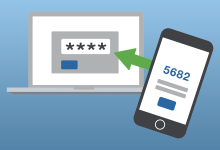How to use PHP to get JSON API data and display them

In today’s digital landscape, web developers often need to retrieve data from third-party APIs (Application Programming Interfaces) and display them on their websites. One common data format used in APIs is JSON (JavaScript Object Notation), which is a lightweight and easy-to-parse format. PHP is a popular programming language used to build dynamic web applications, and it provides built-in functions to handle JSON data.
In this tutorial, we will walk you through the steps of using PHP to get JSON API data and display it on your website. Whether you are building a web application or just need to display some external data, this tutorial will show you how to make HTTP requests to APIs, decode JSON data, and display it using HTML and PHP.
What you need to know about API request
API request refers to the process of making a request to an API (Application Programming Interface) to retrieve data or perform a specific action. APIs are a set of protocols, routines, and tools that enable different software applications to communicate with each other. They allow developers to access data and services provided by other applications or platforms, which can be useful in building more complex applications.
To make an API request, you typically need to know the endpoint URL (Uniform Resource Locator) and the HTTP method to use. The endpoint URL is the address of the API resource you want to access, and the HTTP method specifies the type of request you are making, such as GET, POST, PUT, or DELETE.
API requests can return a variety of data formats, but one of the most common is JSON (JavaScript Object Notation). JSON is a lightweight and easy-to-parse format that is often used for transmitting data between a client and a server. When making an API request that returns JSON data, you can use PHP functions like curl and json_decode to retrieve and parse the data.
It’s also important to note that many APIs require authentication or authorization, which means that you need to provide some form of identification or credentials to access the API. This can include API keys, access tokens, or OAuth tokens, depending on the specific API and its authentication requirements.
Understanding how to make API requests and work with the data they return can be a valuable skill for web developers and anyone working with web-based applications.
What is PHP?
PHP is a server-side scripting language that is commonly used for web development. It was originally created in 1994 by Rasmus Lerdorf as a set of Common Gateway Interface (CGI) scripts to track visits to his personal website. Since then, it has evolved into a full-fledged programming language that is widely used for building dynamic web applications.
PHP code is executed on the server, which means that it generates HTML and other content that is sent to the client’s web browser. This allows PHP to generate dynamic web pages, which can be customized based on user input or other external factors.
One of the key features of PHP is its ability to interact with databases, such as MySQL, to store and retrieve data. This makes it a popular choice for building web applications that require data storage and manipulation.
Promoted contents:
PHP is an open-source language, which means that its source code is freely available for anyone to use and modify. It is also widely supported by web hosting providers and is included in many popular web server software packages, such as Apache and Nginx.
How to use PHP to get JSON API data and display them
To use PHP to get JSON API data and display it, you can follow these steps:
Make an HTTP request to the API endpoint using the curl function in PHP. You can do this by setting the appropriate headers and parameters for the API endpoint you are calling. For example, if the API endpoint requires an API key, you will need to include the API key in the headers.
Here’s an example code snippet for making an HTTP request using the curl function:
$url = 'https://api.example.com/data';
$ch = curl_init();
curl_setopt($ch, CURLOPT_URL, $url);
curl_setopt($ch, CURLOPT_RETURNTRANSFER, 1);
$response = curl_exec($ch);
curl_close($ch);
Once you have the response from the API endpoint, decode the JSON string into a PHP associative array using the json_decode function.
Here’s an example code snippet for decoding the JSON response:
$data = json_decode($response, true);
The next step will be to display the data in a readable format using HTML and PHP. Here’s an example code snippet for displaying the data in a table format:
echo '<table>';
foreach ($data as $item) {
echo '<tr>';
echo '<td>' . $item['field1'] . '</td>';
echo '<td>' . $item['field2'] . '</td>';
echo '</tr>';
}
echo '</table>';
In this example, field1 and field2 are the keys in the associative array returned by the json_decode function. You should replace them with the appropriate keys for the data you are working with.
Note that this is just a basic example, and the implementation may vary depending on the specific API endpoint you are calling and the data you are working with.








